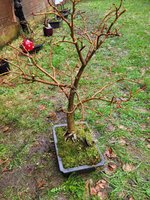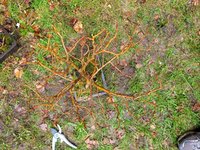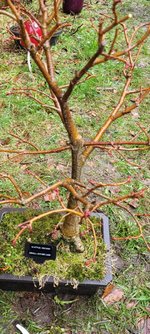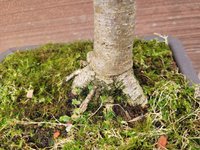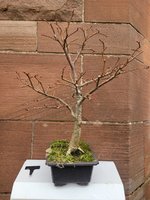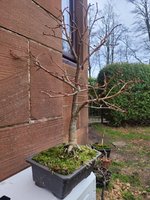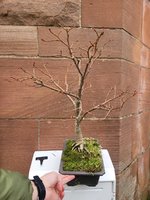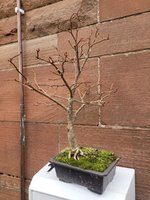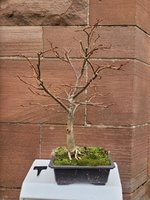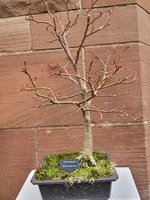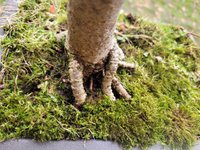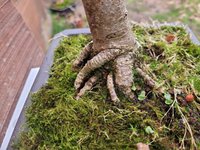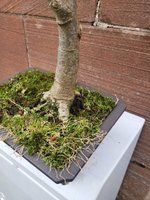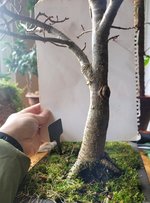Choppychan
Yamadori
Hi,
I have a small leaved lime tree with 3 issues I'd like to fix for now.
I have circled them and highlighted the proposed cuts.
I have a more aggressive chopping option which could take it down to the lowest branch. Personally I think that the second lowest branch should be fine and more conservative for now. Which option do you think would be best?
Also, what would be the best way to correct the root crossing over? I have seen videos of people stripping the bark off and covering the area with soil to create a new nebari. Would that the case for this tree.
I'm fairly inexperienced and this seems like a more advanced trick. Any pointers would be much appreciated.
I have a small leaved lime tree with 3 issues I'd like to fix for now.
I have circled them and highlighted the proposed cuts.
I have a more aggressive chopping option which could take it down to the lowest branch. Personally I think that the second lowest branch should be fine and more conservative for now. Which option do you think would be best?
Also, what would be the best way to correct the root crossing over? I have seen videos of people stripping the bark off and covering the area with soil to create a new nebari. Would that the case for this tree.
I'm fairly inexperienced and this seems like a more advanced trick. Any pointers would be much appreciated.



